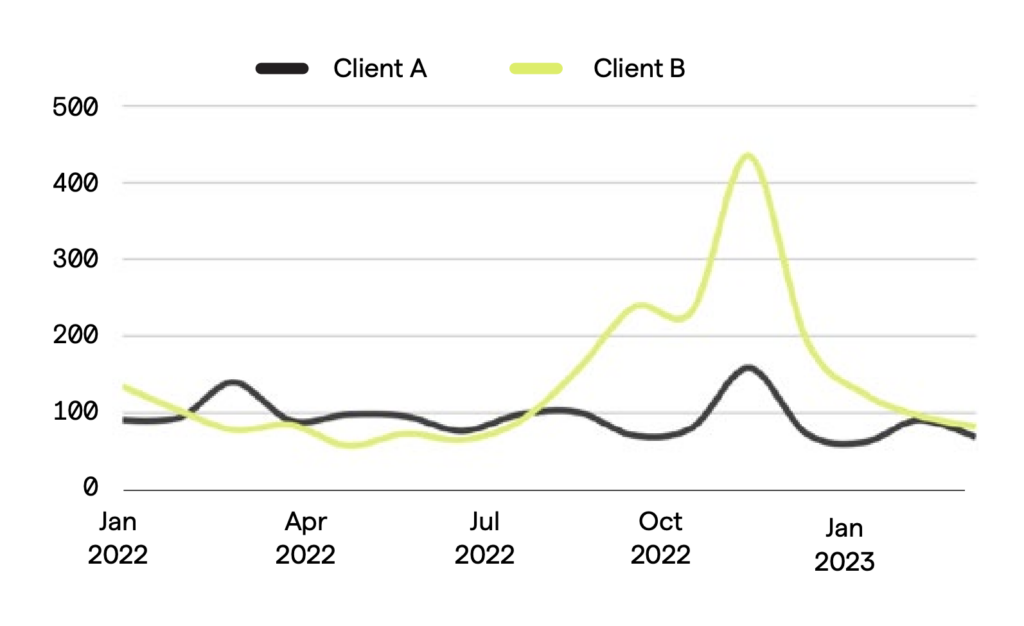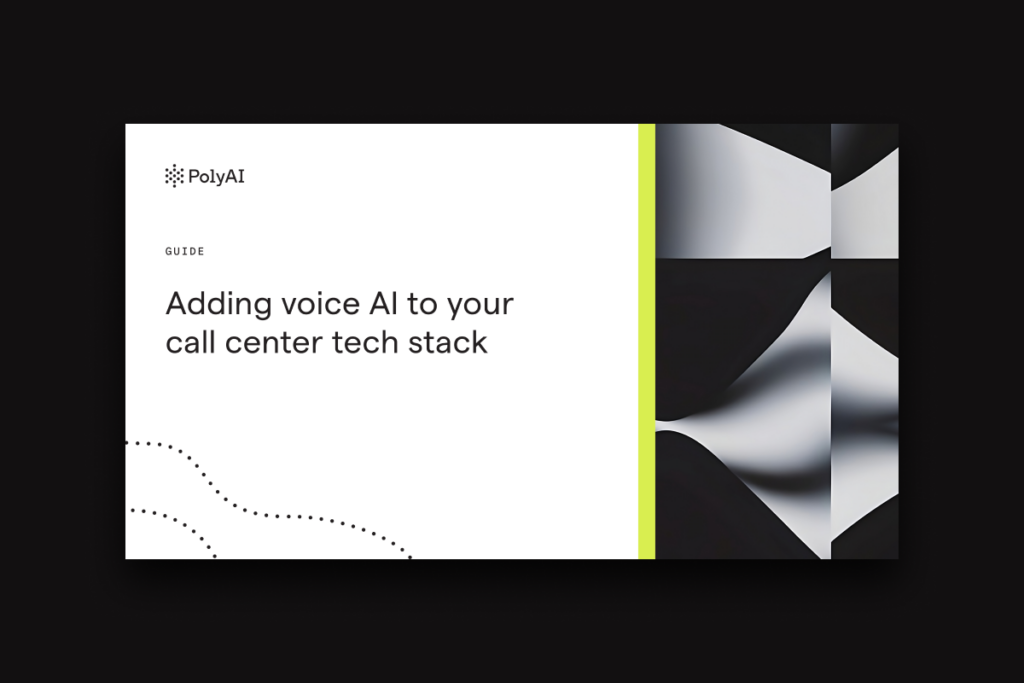Table of Contents
For decades, customer service and CX leaders have struggled to balance operational efficiency and customer experience. Contact centers are looking to improve agent utilization, reduce Average Handle Time (AHT), remove after-call work, improve routing accuracy, and lower call volume. This becomes a matter of cutting costs.
On the other hand, customer experience teams are looking to build customer loyalty and increase customer lifetime value. This is all about generating revenue.
In the PolyAI AI customer service trends report, over 75% of CX and contact center leaders said improving customer experience is a top priority. Meanwhile, 51% are focused on increasing revenue, and 47% on reducing costs.
The question is always, how can you do more with less? But where does this leave your customer? They’re stuck in the middle.
With pressure to cut costs, companies are pushing digital customer support that enables customers to self-serve. But what about the customer who just wants to phone? Self-serve becomes a barrier to the kind of customer service they expect.
At the same time, as access to support is limited, companies are asking customers to give them more: to buy more, share their data, and recommend them to their friends.
PolyAI’s research found that 86% of Gen-Z and younger Millennials prefer the voice channel for customer service.
71% are also willing to engage with intelligent voice assistants, as long as they can accurately resolve their needs.
Why great CX and efficient operations can (and should) go hand in hand
Times have changed, and technology is constantly evolving. AI-driven solutions in the contact center are now surpassing our greatest expectations.
This means that operational customer service and strategic customer experience are no longer two opposing concepts, but rather two sides of the same coin.
By developing technology solutions that focus on the customer, we can drive engagement that naturally creates efficiencies. In other words, if customers want to talk to the automated solution, they won’t push to speak to an agent. If the automated system is capable of solving the customer’s problem, you increase first-call resolution.
It costs less to handle routine queries that eat into profit margins, and you can redistribute your resources to focus on building valuable customer relationships.
Below, we’ll explore three key areas where businesses can positively impact revenue by leveraging AI agents that improve customer experience while naturally creating efficiencies and revenue opportunities.
Handling peak seasons without a spike in operational expenditure
Many companies see monthly call volumes spike by 60% to 200% due to seasonality, trends, or external factors out of their control.
Seasonal call volumes are 60% to 200% above average

The options to manage call peaks are usually hiring temporary staff or outsourcing call overflow to BPOs. Depending on the intensity of the seasonality, this increases monthly operating expenses by between 50% and 180%. Each approach has its advantages and disadvantages.
Temporary hires
Temporary hires are generally a cultural fit and provide a higher quality of service. However, it’s very difficult to find enough staff, which puts immense pressure on the hiring and training teams. They’re also usually the more costly option.
In a 600-seat call center requiring 25 new agents every two weeks, training classes can be anywhere between 6-8 weeks long. Each training class can cost over $70,000 before agents produce any revenue, totaling $1.5 million in training wages alone. Cutting that half not only saves $750,000 per year but significantly reduces stress on recruitment and the increased tenure and knowledge of staff.
Outsourcing to BPOs
Outsourced providers are often the cheaper and easier approach. However, they experience all the same human labor challenges and often produce low-quality agents and customer service levels. As BPOs face the same staffing challenges as everybody else, this becomes a more expensive option where you are passing your problems over to somebody else and paying their margins.
AI agents
So far, voice technologies like conversational IVRs have offered little support to companies during peak times. Speech recognition has failed for many callers, and rigid call flows have prevented customers from getting the support they need.
Customers are clever, and when they don’t want to use a system, they’ll find a way around it, often mashing keypads and shouting keywords until they get through to an agent.
But breakthroughs in AI technology enable companies to develop ‘customer-led’ AI agents. Rather than making users speak using keywords and following rigid flows, customer-led AI agents enable customers to speak however they like for as long as it takes to solve their problem.
This delivers an experience similar to speaking with a customer service representative and keeps the caller engaged for long enough to offer true resolution, without the need to speak to a person. Not only is your team freed up to focus on high-value calls, but you can expect to reduce your seasonal hiring by 40-60%.
These calls ‘clog up’ customer service lines, increasing wait times for everybody, which, in turn, risks potential revenue as customers get fed up and take their business to your competitors.
We surveyed CX and contact center leaders at enterprise companies with annual revenue of $500m+ to get the scoop on how AI is changing the customer service landscape.
Find out what they had to say.
Refocusing your team on high-value interactions
The time agents spend on low-value calls (such as password resets, order tracking, or FAQs) varies, but PolyAI clients have reported that 30-60% of agent time is spent answering queries that could easily be resolved online or through other, cheaper channels.

Beyond missing potential revenue, the phone is the most expensive channel, with a 3-4 minute call costing $2.70 to $5.60. This makes it even more critical to maximize the value of each call.
An underappreciated optimization opportunity lies in automating the low-value part of a call, like customer password resets, ID&V, or simple FAQs. This can drive down AHTs by 20-30%, giving additional capacity to your call center without sacrificing customer service.
Scale efficiency and experience together
Contact centers no longer need to choose between operational efficiency and great customer experience. With AI agents in place, enterprises can automate routine and complex queries, resolve more calls, and give their teams the space to focus on what matters most.
Customers get fast, effective service, and organizations gain capacity and save costs. And your team is better equipped to deliver meaningful, value-driven experiences.
Speak to our team today about how PolyAI can help you implement the world’s most lifelike and adaptable AI agent to deliver effortless CX at scale.




